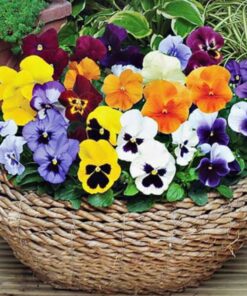-
×
Pansy Seeds Swiss giant mix Color 40-50 seeds Open Pollinated
2 × ₹60.00 -
×
 Plant label T type pack of 100 white color 6.8cm X4.8Cm
1 × ₹299.00
Plant label T type pack of 100 white color 6.8cm X4.8Cm
1 × ₹299.00
Subtotal: ₹419.00
 Pansy Seeds Swiss giant mix Color 40-50 seeds Open Pollinated
Pansy Seeds Swiss giant mix Color 40-50 seeds Open Pollinated
 Plant label T type pack of 100 white color 6.8cm X4.8Cm
Plant label T type pack of 100 white color 6.8cm X4.8Cm
Subtotal: ₹419.00
 Pansy Seeds Swiss giant mix Color 40-50 seeds Open Pollinated
Pansy Seeds Swiss giant mix Color 40-50 seeds Open Pollinated
 Plant label T type pack of 100 white color 6.8cm X4.8Cm
Plant label T type pack of 100 white color 6.8cm X4.8Cm
Subtotal: ₹419.00
| Number of Seeds | 100 seeds |
|---|---|
| Sowing month | Sept to Jan |
| Blooming Month | Dec to April |
| Sun | Full Sun |
| Sowing Temperature | Day time below 30C |
| Germination Level | Easy |
|---|---|
| Growth Pattern | Up right Straight |
| Hybrid or Open Pollinated | Op |
| Ideal location | Partial Sun |
| Origin Country | India |
| Color | Red |
You must be logged in to post a review.
Reviews
There are no reviews yet.